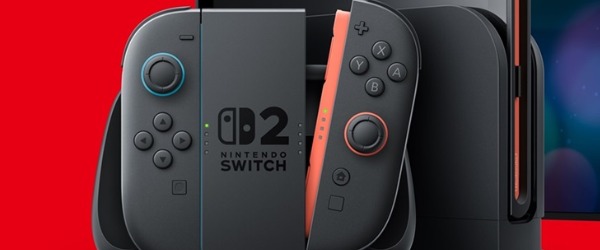
Rumor: PS5 Redesign to Enter Production in 2022, Feature New Semi-Customized 6nm CPU - News
by William D'Angelo , posted on 02 August 2021 / 8,732 ViewsA new report from Taiwanese website Digitimeswho spoke with industry sources says that suppliers will start producing a redesigned PlayStation 5 console in the second or third quarter of 2022.
The sources say the redesigned PlayStation 5 will feature a new semi-customized 6nm CPU from AMD, which is said to be cheaper than 5nm.
This should be treated as a rumor as Dr. Serkan Toto who spotted the article says that Digitimes has a spotty track record with its reporting in the past.
Sony CFO Hiroki Totoki has previously stated that the company was potentially looking into redesigning the PS5 to increase production. Right now with shortages, Sony is aiming to beat PS4's sales in its first full fiscal year of 14.8 million shipped from April 2014 to March 2015. Totoki said it is unlikely they will be able to drastically increase the supply of the PlayStation 5.
Taiwanese news outlet with spotty track record Digitimes: Sony aims for a PS5 redesign for 2Q or 3Q 2022: https://t.co/ASb1oWa3gM (paywall: and yes, I am subscribed)
— Dr. Serkan Toto / Kantan Games Inc. (@serkantoto) May 6, 2021
It says the next PS5 will come with a "new semi-customized" 6nm CPU from AMD.
5nm is said to be too costly.
A life-long and avid gamer, William D'Angelo was first introduced to VGChartz in 2007. After years of supporting the site, he was brought on in 2010 as a junior analyst, working his way up to lead analyst in 2012. He has expanded his involvement in the gaming community by producing content on his own YouTube channel and Twitch channel dedicated to gaming Let's Plays and tutorials. You can contact the author at wdangelo@vgchartz.com or on Twitter @TrunksWD.
More Articles
Yeah, this will be an internal design change only, one aimed at increasing chips-per-wafer (= more consoles). This is a good and easy step for Sony to do. TSMC's 6-nm is design compatible with their 7-nm line, which the PS5 is currently on. That means going to 6-nm requires very little work, but it still does give a small transistor-per-mm² increase therefore allowing Sony to squeeze a few more PS5's chips per wafer. There will also be a little boost to power efficiency, so these new PS5's will consume a few watts less, but both the smaller chip size and lower power are not enough to change the external design/cooling requirements. For that, the smart bet is on Sony waiting for 3-nm to be in full mass production. A 3-nm chip would change things drastically enough for Sony to do the usual PS5 Slim model (this would be like a 2024 thing, which would be about correct historically).
yep you're absolutely right. It's not just a small increase though. Am I not right in saying that going from 7nm to 6nm takes you from 49units squared to 36 units squared holding transistor count constant. If they got the potential out of it that's a substantial shrink
Last official word on N6 was it would bring a ~15% reduction in logic density areas compared to regular N7 (which the PS5 uses), along with a 10% increase in performance at same power, or 10% lower power at same performance. But since that transistor increase is only in logic, not SRAM or other caches which make up a big part of the SoC, it's why I estimated (in another comment below) that overall Sony will probably get like 5-7% more chips per wafer out of it. Nothing to sneeze at of course, but it's not going to double PS5 production overnight or anything either.
Perhaps they could make the system even larger? If it featured a walk in area that could keep food warm while you game it would be a real selling point for some people.
Marriage of food consumption and a sedentary pastime is a horrible thing... Let's do it!
They could take the tagline from the X360! "Jump in.... and eat some food"
Article is full of glaring inaccuracies.
The Playstation 5 has a 7nm CPU, not a 5nm CPU for example.
6nm is actually just a refinement of 7nm, it uses the same design rules, it will be a porting of the current chip design, rather than a "new" chip. - It will have the same performance and electrical characteristics, but higher gate density.
What Sony is hoping to achieve here is by using a node that isn't going to be heavily contested, massively reducing supply constraints... Well. That is the idea anyway, market could shift it's demand over the next 12 months.
Largely false what you write here.
Yes, the new 6nm chips will use the same design rules and the same wafer quality as the currently 7nm node in use. However, there are significant differences which result in several key consequences:
- Intrinsic defect rates will be the same, so yields can be expected to be at least as good.
-
TSMCs 6nm process uses refined euv lithography. This has several consequences:
a) More precise patterning leads to less leakage currents. Likely a few less masks will be required (no triple and even quadruple patterning required?)
b) Smaller chip area leads to more chips per wafer and less powerrequired to drive the chip
All things considered, the chip could run at 10%-15% higher frequencies or will require up to 20% less energy.
As the "new" PS5 will likely be set to perform as the "old" PS5 (so as not to piss off current owners), the second path will ikely be followed. We are talking up to 20% power savings on something that currently burns through 200W+, so a much cheaper/smaller cooling solution is on the table (along a bigger ssd?)
1) Never made any assertions on yields.
2) You are right it does use EUV, but I never made any statements on that aspect, so I cannot be "false". - Keep in mind TSMC's 7nm+ also uses EUV.
3) Never mentioned the amount of patterning. So again... Not spreading false information on that either.
4) Higher gate density tends to fall in the "smaller chip category" - Which we both seem to agree on here, thus not false.
5) You will only get notable higher frequencies with a full reworking of the chip to reduce things like leakage.
Plus 6nm isn't as mature as 7nm which can impact frequencies/power... And thus we cannot make any assertions on power characteristics untill chips have been demonstrated.
Keep in mind that 6nm is 7nm, it's all just advertising bullshit, it's not representative of feature geometries. It uses the same BEOL and/or FEOL.
If this helps Sony in anyway for PS5 production I'm all for it. I prefer they keep they form factor the same I like my PS5 thicc and don't take away the curves. Mark Cerny knew what he was doing.
Could just be an internal redesign only, but I'm all for another design altogether, whichever helps production.
Unless TSMC comes out with a yes, then it is bull. They are at max capacity already.
This is already available, it reuses the same tools/fabs as the current N7 (7-nm) and N7P (7-nm+) lines from TSMC. See my comment above for why it makes sense for Sony to utilize it.
Fair enough, 2022 seems early still.
As far as doing a SoC process upgrade, this is DEFINITELY sooner than usual for a console. This is absolutely the result of the chip shortage, and Sony doing everything they possibly can to increase production. To be clear, by moving from TSMC's N7 to N6 nodes, Sony might get like 5-7% more chips per wafer? It won't be much. But to Sony, that 5-7% is I guess worth it. It could be a little more than that, taking into accounts yields. Microsoft went the bigger chip, but slower clockspeed route with Xbox Series X; this is generally better for yields actually. Sony went with the smaller chip, super high clockspeed route - this can result in more chips that are totally functional, but just don't reach the high clockspeeds the PS5 operates at, and therefore just get "thrown away." By moving to the N6 node, since it will give a small overall power efficiency boost, it should result in more chips operating at the speeds Sony needs as well. In other words, it's really a win-win for everyone involved, but again, if TSMC had plenty of capacity to go around, I'm willing to bet this is not something Sony would have bothered with.
Sony might be dual sourcing... A 7nm line and a 6nm line of chips.
It's just a refined 7nm process, a few things have changed (I.E. Higher gate density) where they can badge it as a new node.
But there isn't much congestion on this node though, but that could change in another 12~ months as chip designers look at ways to get more chips. (I.E. Sony isn't the only one looking into this.)
after reading this and I know its old https://www.anandtech.com/show/14228/tsmc-reveals-6-nm-process-technology-7-nm-with-higher-transistor-density my questions are pretty much along this line of thinking, Pem , isn't it even though early more likely just a natural continuation of the usual manufacturing cycle. my reasoning behind this revolves around the 2022 date maybe be the time they see a convergence in regard to the ripening of 6nm coming together with better supply and capacity making it a good time to do the move rather than it being focused on easing supply and capacity problems that are in many way a social and structural problem that needs a wider solution that time will turn around anyway .
AMD allocated all the 7nm capacity derived from Apples move to 5nm to the PS5 and with its prior allocation it sits at 70% of the line and this leads to my next bit rather than say having to move to a whole new line like 5nm the question is can they with 6nm being a refinement make use of the existing 7nm capacity or does it need a 6nm line and that then brings up further capacity and timeline questions.
We just need to look at what happened with 16nm, it eventually got "refined" and resold as 12nm.
Many chip designers grabbed their design and ported it to 12nm when it became financially beneficial... But by doing so, TSMC had less customers on 16nm so that also became cheaper due to less supply/demand pressures.
As for 7nm vs 6nm capacity, they will be using separate production lines... Many of the tools and materials though are shared between the two, so if there is supply shortages there, it will affect everything.
The 6nm line for all intents is separate from 7nm otherwise.
Thanks mate, I'm still a bit puzzled about the answer of this being about
just increased production by Sony reasons of NextGen_Gamer and your dual sourcing reply , again not being fully cognisant of all the steps involved in chip production, I'm "theorising" ( sounds much better than bullshitting) so I may be using false premises, that being we know that tsmc is running close to full as practicable but more capacity. is on the way could the 2022 date be linked to the arrival of some of that new capacity.
IF true and the 6nm line in question is both a part of that future capacity and also provides larger scale production than the existing 7nm line is it simply more likely that it held more attractive options than just easing current supply and that attraction was AMD/Sony killing two birds with the one stone by combining both new capacity and the technical and financial advantages of a new node explaining the earlier than usual move






















 Essay Pro
Essay Pro